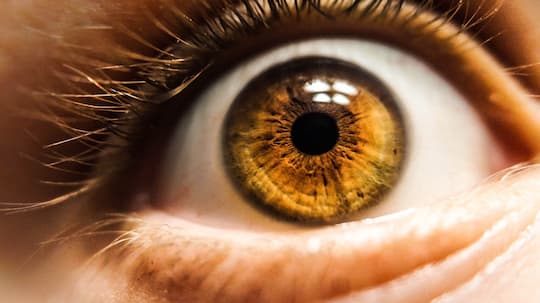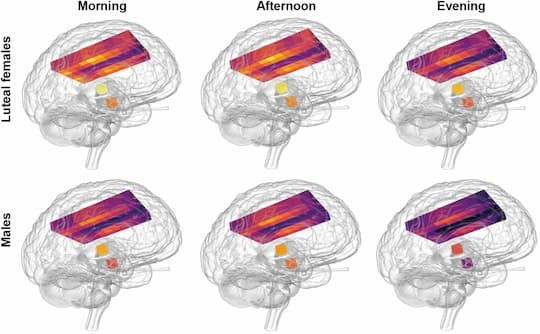How much of our brain do we use? Certainly way more than the 10 percentage points suggested by the myth and here’s why…
How much of our brain do we use?
Unfortunately, it is a pure myth that we only use 10 percent of our brain.
The idea that we only use 10 percent of our brain is probably such an enduring mind myth because it’s comforting to think we have spare capacity.
The ‘unused’ 90 percent of our brain could take up the slack after brain injury or offer the possibility for miraculous self-improvement.
This flexible factoid has been used not only to sell products to enhance our brain’s performance, but also by psychics like Yuri Geller to explain mystical cutlery bending powers.
How much of our brain do we use?
Unfortunately, the idea we only use 10 percent of our brain is almost certainly false.
Here are four good reasons (Beyerstein, 1999):
- If we only use 10 percent of our brains then damage to some parts of our brains should have no effect on us. As any neurologist will tell you, this is patently not true.
- From an evolutionary perspective it is highly unlikely we developed a resource-guzzling organ, of which we only use 10 percent.
- Brain imaging such as CAT, PET and fMRI shows that even while asleep there aren’t any areas of our brain that completely ‘switch off’.
- Parts of the body that aren’t used soon shrivel and die. Same goes for the brain. Any neurons we weren’t using would soon shrivel and die.
Therefore, we must use way more than 10 percent.
New Age optimism
Despite these facts, the myth is constantly fuelled by New Agers hoping to unlock the untapped, hidden forces that will unleash previously unimagined human potential.
Just when all the evidence has been marshalled against its original incarnation, showing that, yes, actually we do physically use all our brains, it turns out ‘human potential’ can’t be measured empirically.
Apparently the unused 90 percent is hidden below the surface, out of sight and almost out of mind.
Which is convenient.
Scientific scepticism
The structure of the brain and its metabolic processes have been carefully examined, along with the diseases that afflict it.
None of this work has suggested there is a hidden percentage of our brain that we’re not using.
Anyone who still maintains we only use 10 percent of our brains after this fusillade of fact has to come up with a counter-argument for each one of these.
Actually, you might argue that imaging technology is rubbish or the neurons are only working at 10 percent capacity, but refuting all these facts, taken together?
Now that’s tricky.
Roots of the 10 percent brain myth
The roots of this myth about how much of our brains we use are very difficult to discern, probably because there are so many different, diffuse stories about its origin.
One apocryphal story is that Einstein once explained his brilliance by saying he used more than 10 percent of his brain, compared to the rest of us mere mortals (Wanjek, 2003).
Despite probably being based on a misquote, the repeating of this story can’t have hurt the 10 percent brain myth’s power.
Perhaps some of the earliest roots of the idea that we only use 10 percent of our brain comes from work by physiologists in the 1870s.
They routinely applied electrical currents to the brain to see which muscles moved.
They found that large parts of the human brain could be zapped without any corresponding bodily twitching.
This led them to dub parts of the brain ‘silent’.
But they didn’t mean silent in the sense of inactive, just that it didn’t make any muscles move.
Of course this didn’t stop the phrase being misinterpreted.
The first sighting of the myth
The actual confirmed first written sighting of the myth about how much of our brain we us, though, is in a 1940s advert for the book Cold Comfort Farm by Stella Gibbons (Wanjek, 2003, p.21):
“What’s holding you back? Just one fact — one scientific fact.
That is all.
Because, as Science says, you are using only one-tenth of your real brain-power!”
Whatever its provenance, the myth about how much of our brain we use is certainly a slippery customer.
The reason is two-pronged: first, it’s impossible to prove something doesn’t exist and second, people like to believe it.
If I say I’ve seen a Pegasus, or visited Mars, or that all our brains have huge untapped potential, you can’t definitively prove me wrong.
That’s why, despite a few good solid blows to the head, this myth refuses to go down.
Perhaps putting it the other way around might deliver the knock-out blow.
Instead of talking about the 90 percent of untapped potential, just ask people why they only use 10 percent of their brains.
Would anyone seriously admit to that?
I, for one, am working at maximum capacity.
Well, most of the time anyway…
.










